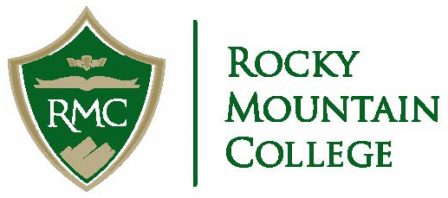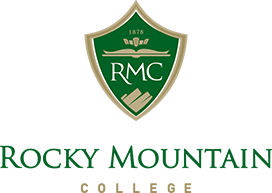Student Loans
March 18, 2022 2024-02-16 17:38Student Loans
Taking out loans to pay for a Rocky Mountain College education is an investment in your future that will pay for itself many times over. Student loans, unlike grants and work study, are legal obligations that you will have to repay, with interest, just like car loans and home mortgages. If you decide to take out a loan, make sure you understand who is making the loan and the terms and conditions of the loan. How much student loan debt you should borrow is a very personal decision. Your student loan dollars should be used only for items directly related to your college education. We encourage you to borrow responsibly and only what you need to cover your costs. See our Financial Literacy Page to help you decide how much you should borrow.
Please go to Federal Student Aid for complete information and to apply for federal student loans. If you choose to borrow a federal student loan, information about it will be submitted to the National student Loan Data System (NSLDS) and will be accessible to guarantee agencies, lenders, and institutions determined to be authorized users of the data system.
Federal Direct Student Loans
Direct Loans are low-interest loans for students to help pay for their education after high school. You must be enrolled as at least a half-time (6 credits) to be eligible. The lender is the U.S. Department of Education rather than a bank or other financial institution. To be eligible for a Direct Loan, you must to complete a Free Application for Federal Student Aid (FAFSA).
There are two types of Direct Loans: subsidized and unsubsidized. You must have financial need to receive a subsidized Direct Loan. The U.S. Department of Education will pay (subsidize) the interest that accrues on subsidized Direct Loans during certain periods. Financial need is not a requirement to obtain an unsubsidized Direct Loan. You are responsible for paying the interest that accrues on unsubsidized Direct Loans.
There are limits on the amount you can borrow in Direct subsidized and unsubsidized loans depending on your grade level and on whether you are a dependent or independent student. This table shows the maximum Direct Loan you may borrow each academic year:
| Dependent student* | Independent student** | |
| 1st-year undergraduate | $5,500 (maximum $3,500 subsidized) | $9,500 ($3,500)*** |
| 2nd-year undergraduate | $6,500 (maximum $4,500 subsidized) | $10,500 ($4,500)*** |
| 3rd- & 4th-year undergraduate | $7,500 (maximum $5,500 subsidized) | $12,500 ($5,500)*** |
| Graduate/professional | NA (All graduate and professional students are considered independent.) | $20,500 |
*Except those whose parents are unable to borrow a PLUS loan.
**These limits also apply to dependent students whose parents are unable to borrow a PLUS loan.
***The numbers in parentheses represent the maximum amount that may be subsidized.
The actual loan amount you are eligible to receive for an academic year is determined by the Financial Aid Office and may be less than the maximum annual amounts shown in the chart above.
There are aggregate loan limits as well. Subsidized and unsubsidized aggregate loan limit for dependent undergraduate students is $31,000 – no more than $23,000 of this may be in subsidized loans. For independent students and dependent students whose parents cannot borrow a PLUS the aggregate limit is $57,500 – no more than $23,000 of this may be subsidized. $138,500 for graduate or professional students – no more than $65,500 of this amount may be in subsidized loans. The graduate aggregate limit includes all federal loans received for undergraduate study.
Please visit the Department’s Subsidized and Unsubsidized Loans web page for complete information on current interest rates, fees, and repayment options.
If it is your first time borrowing a Direct Loan you will be required to:
- Complete entrance counseling, a tool to ensure you understand your obligation to repay the loan; and
- Sign a loan contract called a Master Promissory Note (MPN), agreeing to the terms of the loan. Once you complete an MPN it is good for 10 years.
Federal Direct Parent Loan (PLUS)
Parents may borrow a Federal Direct PLUS loan to assist with educational expenses. Before a parent can apply for a PLUS loan their child must complete a Free Application for Federal Student Aid (FAFSA). The maximum annual PLUS loan amount is the cost of attendance minus any other financial assistance the student receives. Repayment begins after the loan is fully disbursed (paid out). However, a deferment may be requested while your child is enrolled at least half-time and for an additional six months after your child graduates, leaves school, or drops below half-time enrollment. Parents must be credit worthy, as determined by the credit check performed by the Department of Education. Please visit the Department’s Direct Parent PLUS Loan web page for complete information about interest rates, fees, and repayment options.
All parent borrowers must complete the following (in order):
- Federal Direct PARENT PLUS Loan Application/Authorization – This must be completed yearly or with each loan request. Submitted this form to the Rocky Mountain College Financial Aid Office. PLUS Loan requests will not be processed until this document is received. PLUS loan funds are disbursed equally between Fall and Spring semesters. To help determine the annual loan amount to apply for, refer to the student’s registration billing statement that includes course schedule, total tuition, fees, housing and meal plan costs, expected financial aid, and remaining balance due, and use our Loan Calculator, or contact the financial aid office at finaid@rocky.eduor call 800.877.6259 ext. 1031.
Parent PLUS Master Promissory Note (PMPN) – Complete a PMPN for each dependent student attending college. Once you complete a PMPN, it is good for 10 years.
Federal Direct Grad PLUS Loan
The U.S. Department of Education makes Direct Grad PLUS Loans to eligible graduate or professional students. Before you can apply for a Grad PLUS loan you need to complete a Free Application for Federal Student Aid (FAFSA). The maximum annual amount is cost of attendance minus any other aid received. Repayment starts six months after you graduate, leave school, or drop below half-time enrollment. Students must be credit worthy, as determined by the credit check performed by the Department of Education. Please visit the Department’s Direct Grad PLUS Loan web page for complete information about interest rates, fees, and repayment options.
Graduate/professional students must complete the following:
- A Consent to Obtain Credit Report each year and submit it to the Rocky Mountain College Financial Aid Office.
- Complete entrance counseling if you haven’t previously received a Grad PLUS loan.
Sign a Direct Grad PLUS Loan Master Promissory Note (MPN), agreeing to the terms of the loan. Once you complete a PMPN it is good for 10 years.
Private Loans
Private loans, also called alternative student loans, are available to students who need additional funds to meet educational expenses. The student’s loan eligibility is determined by the cost of attendance less other financial aid or the annual loan maximum amount as determined by the lender. In addition, the lender will look at your credit history and other factors to determine if they will lend to you. One lender might deny you while the next approves you because of the different ways they interpret your information. Students may apply for these loans on their own, but oftentimes will need a cosigner.
Private loans are not for everyone. They can be expensive and should only be utilized when all other federal resources, such as Federal Direct Student Loans and Federal Direct Parent PLUS loans, have been exhausted. Please read this Plain Language Disclosure for Direct Subsidized Loans And Direct Unsubsidized Loans Willian D. Ford Federal Direct Loan Program (Direct Loan Program) before borrowing a private loan.
Please visit FASTChoice for possible private loan lenders. The lenders and loan options presented in FASTChoice include all lenders who made a loan at RMC within the last four years and allow you to compare them easily. You are free to choose any lender, including those not presented. If you choose a lender that is not presented, please contact the financial aid office. Application processing will not be delayed unnecessarily if you choose a lender not presented.
Contact
Prescott Hall
Lower Level


